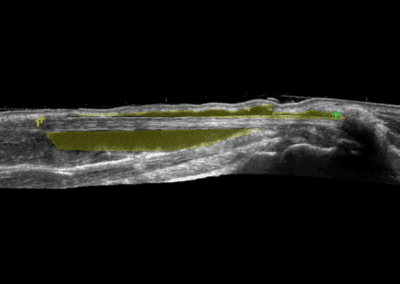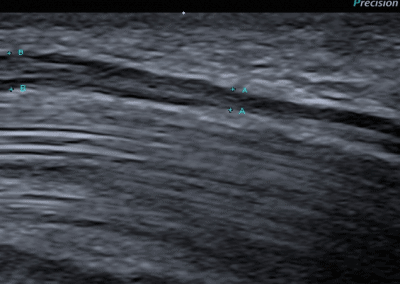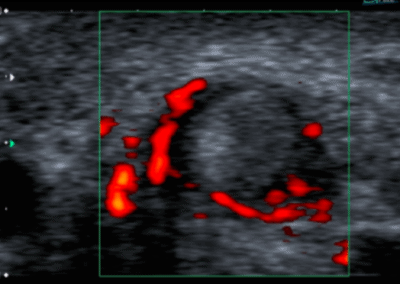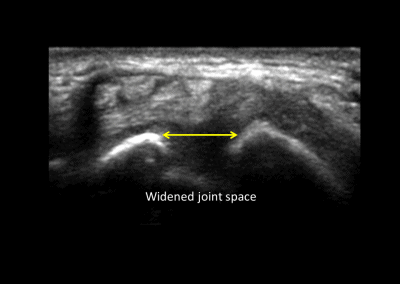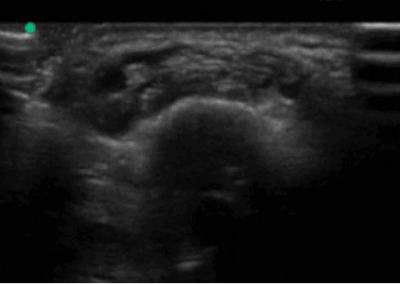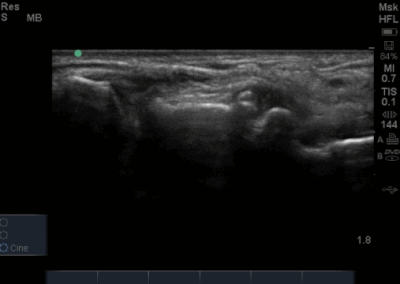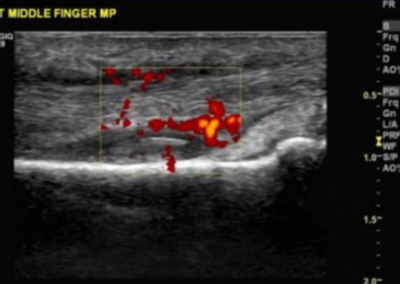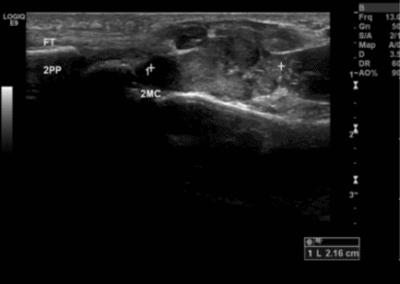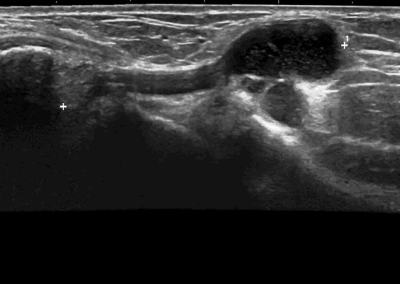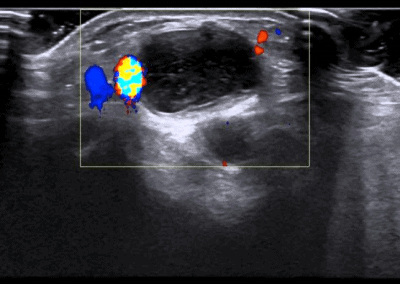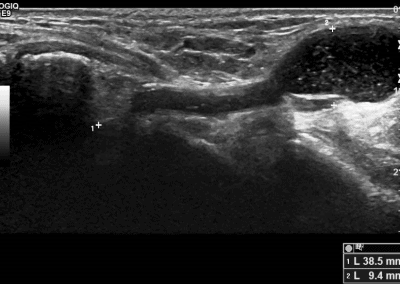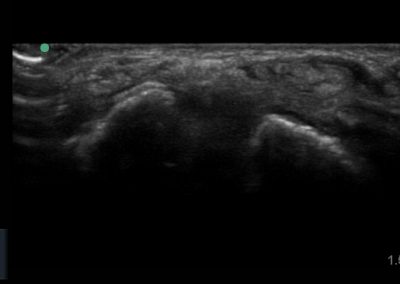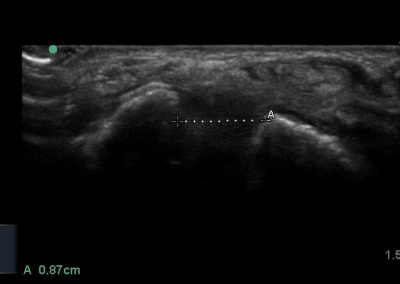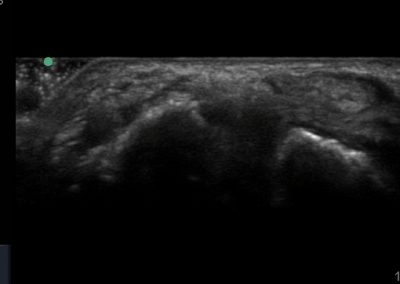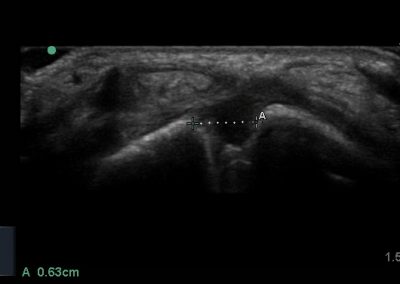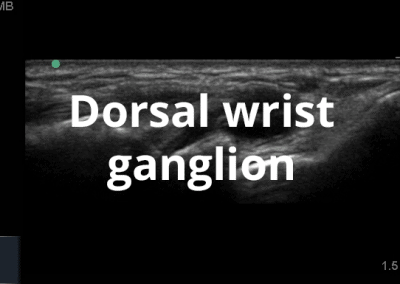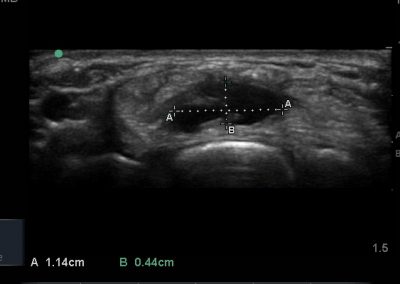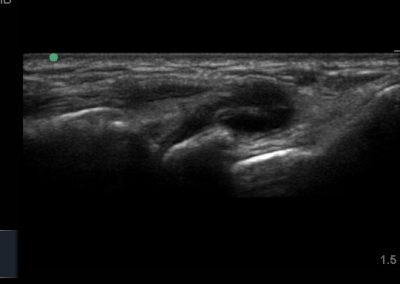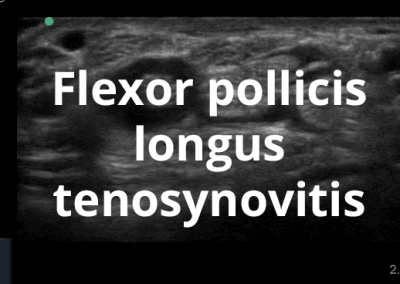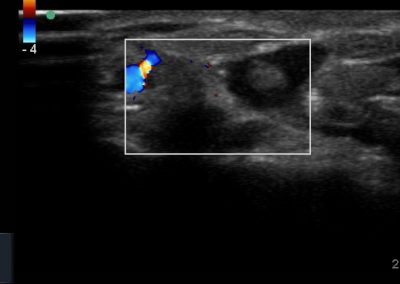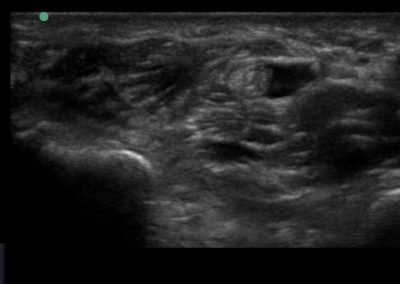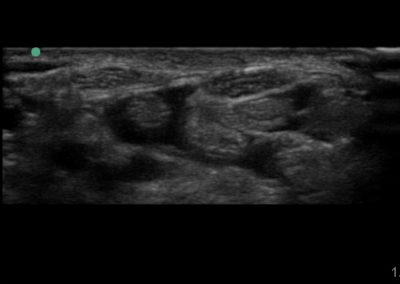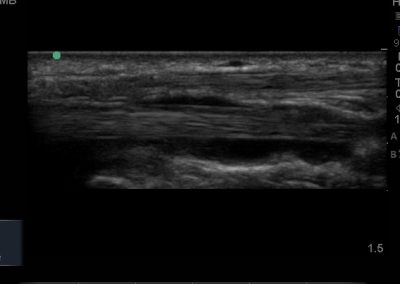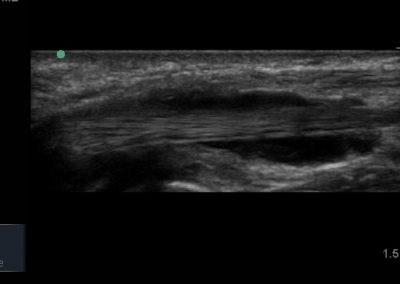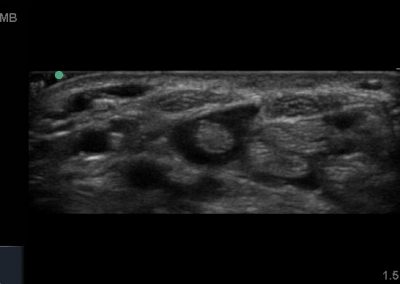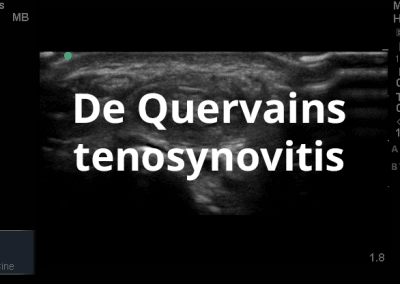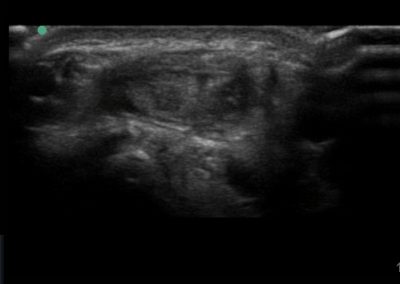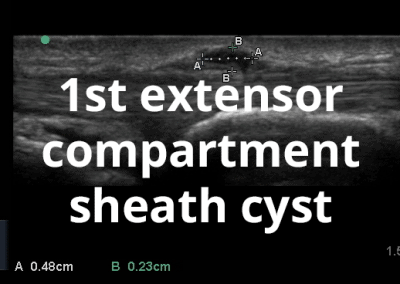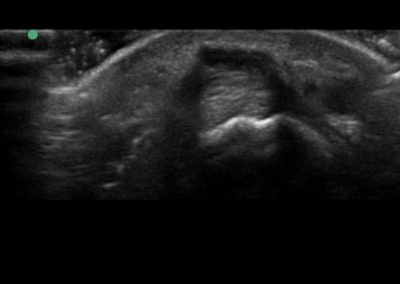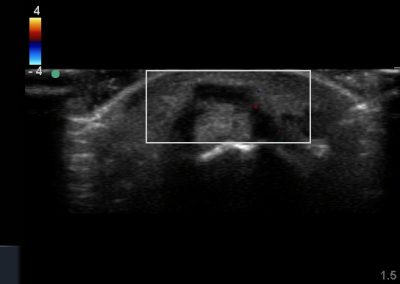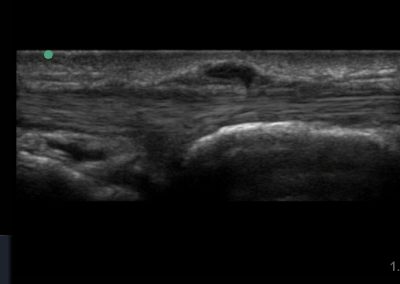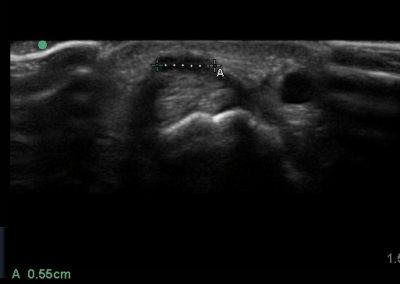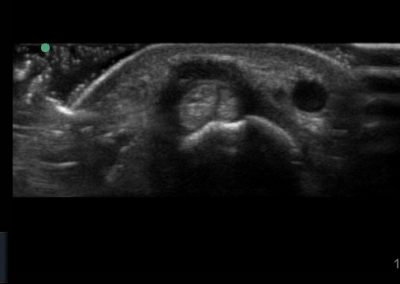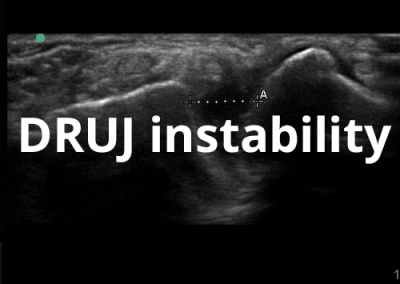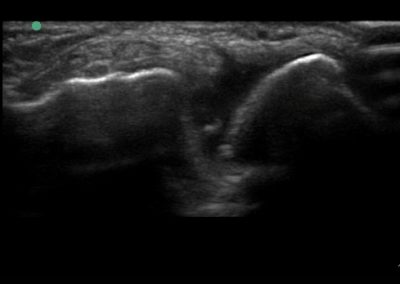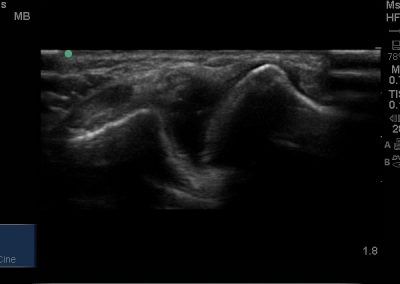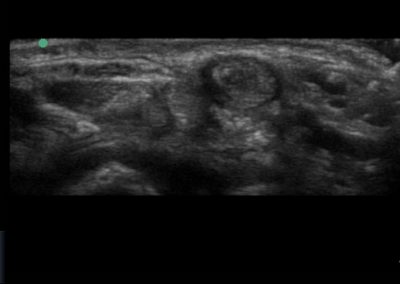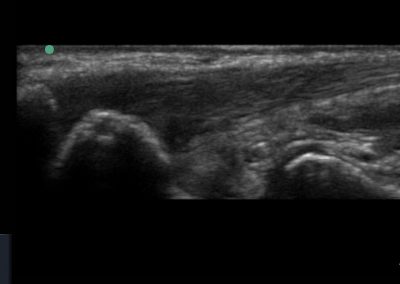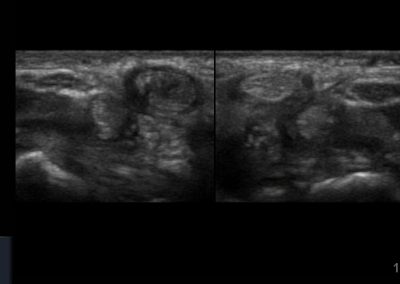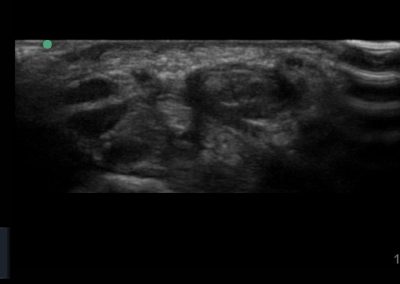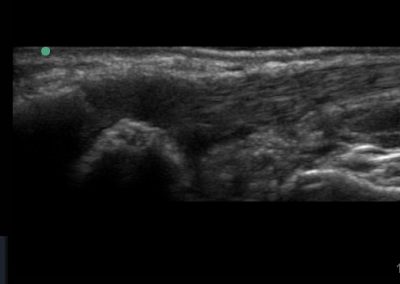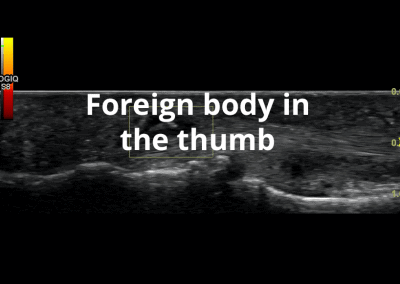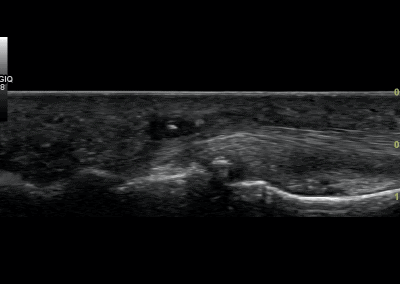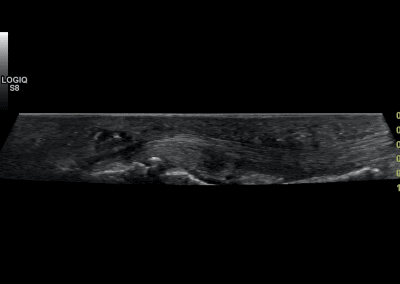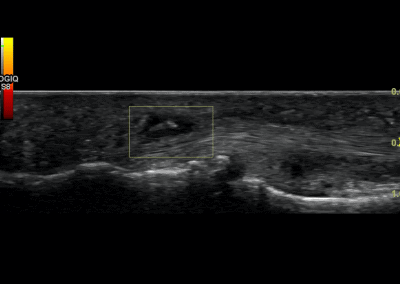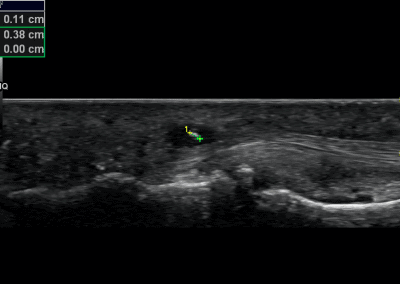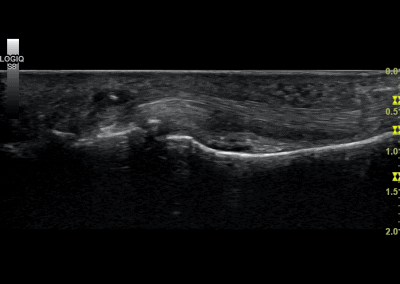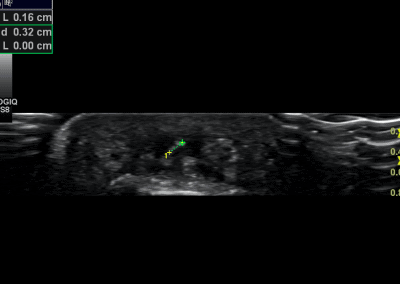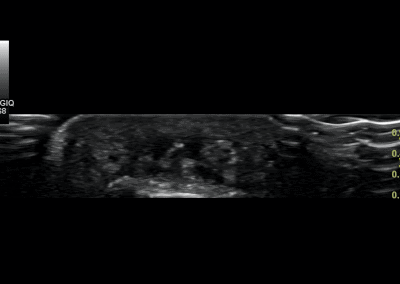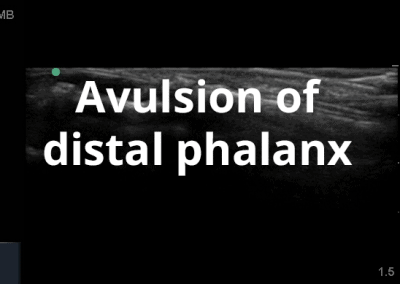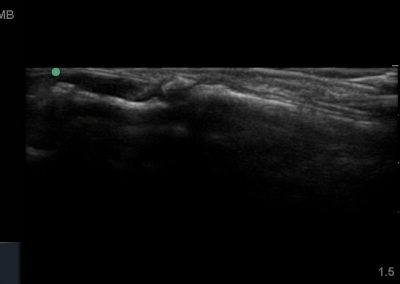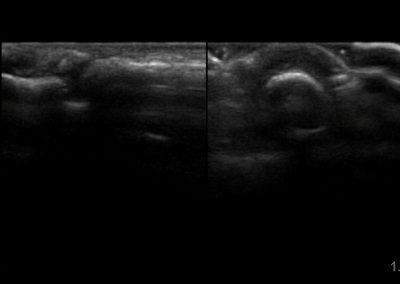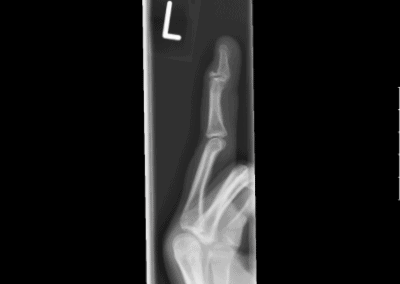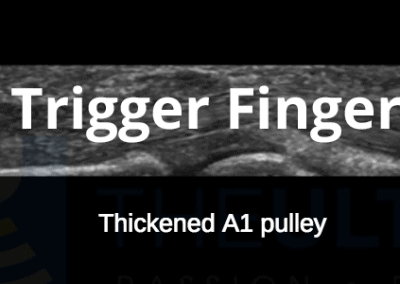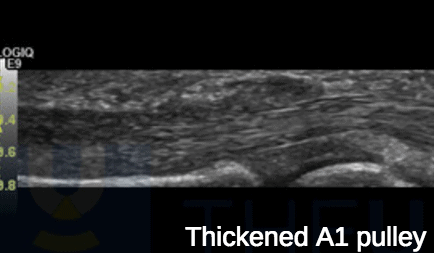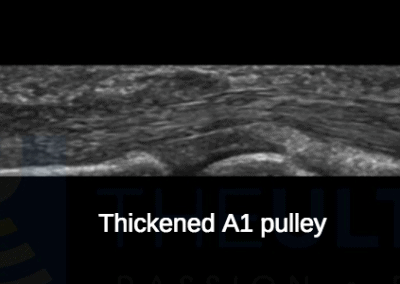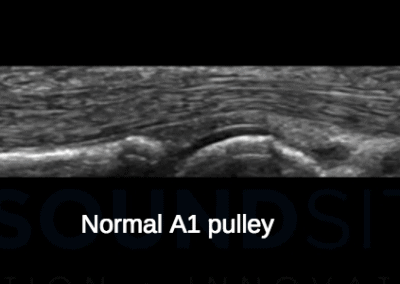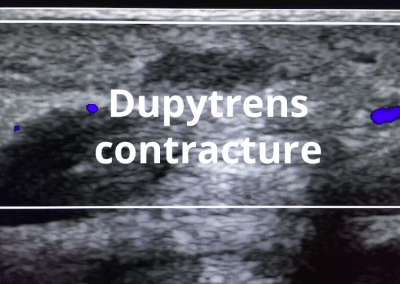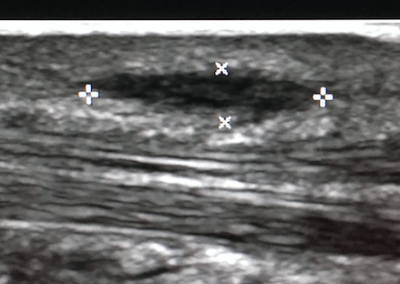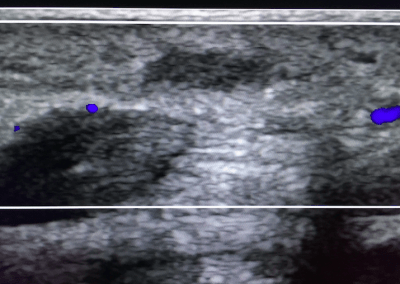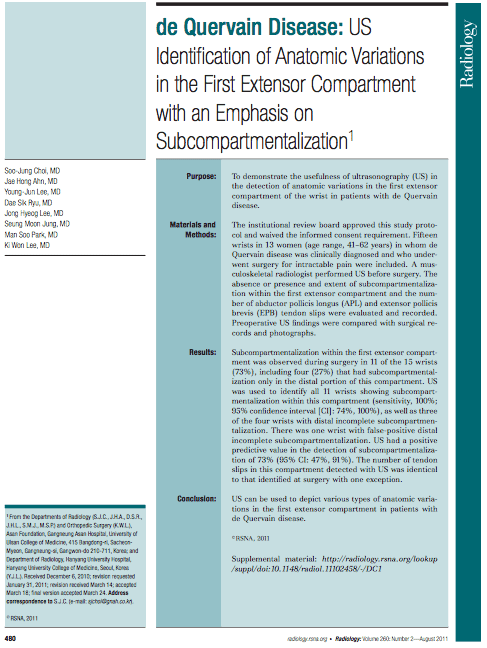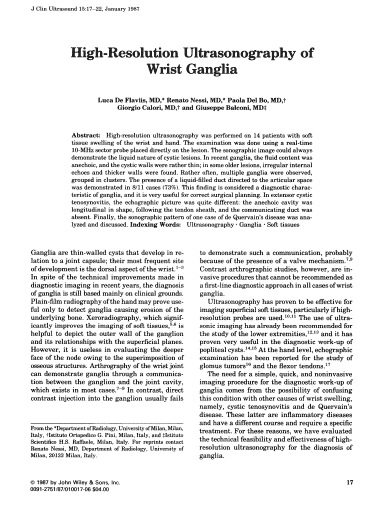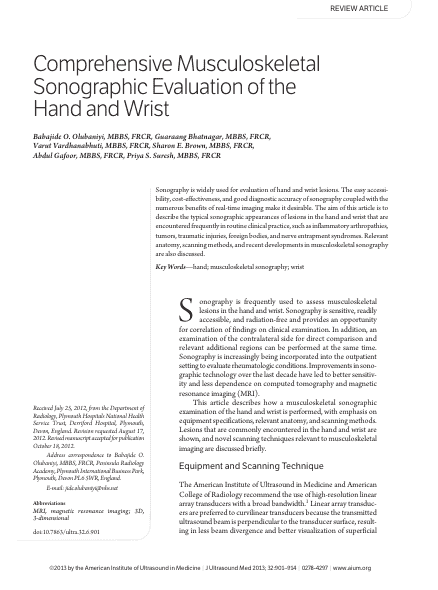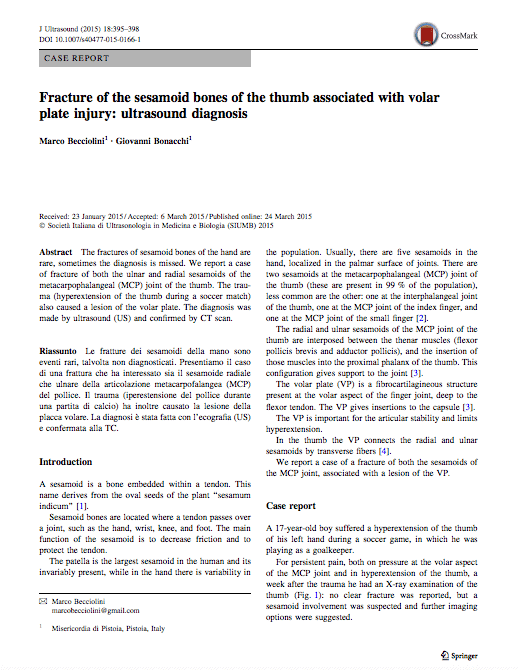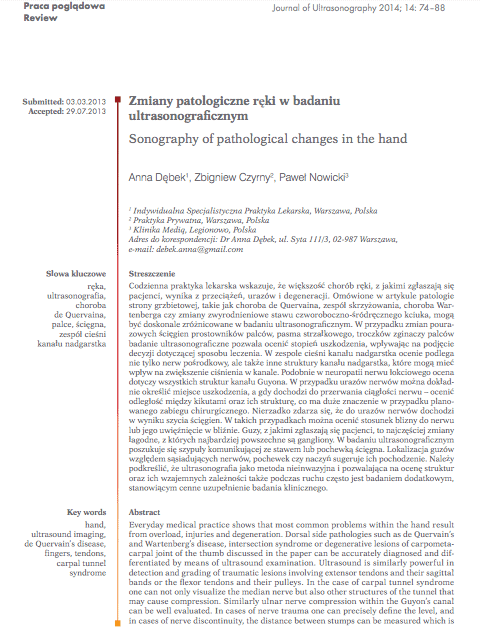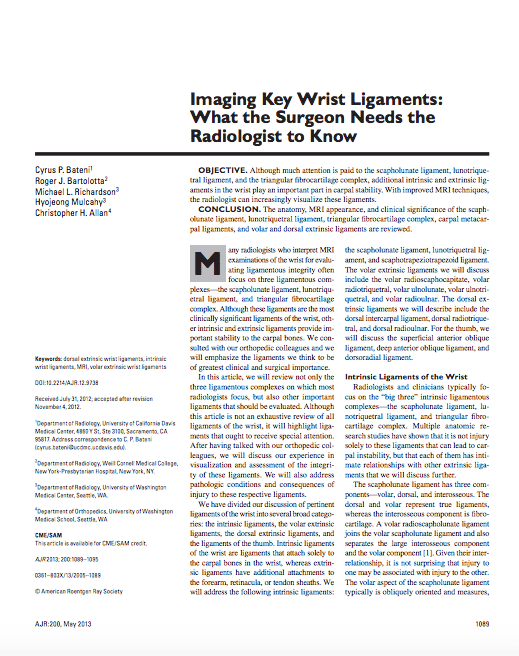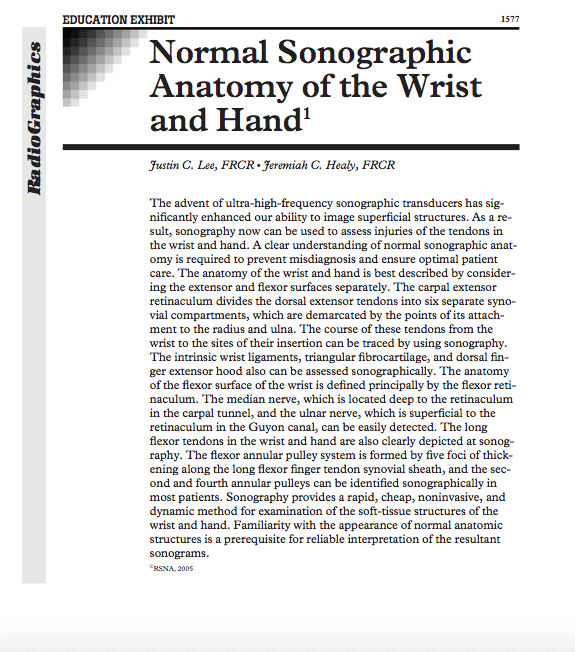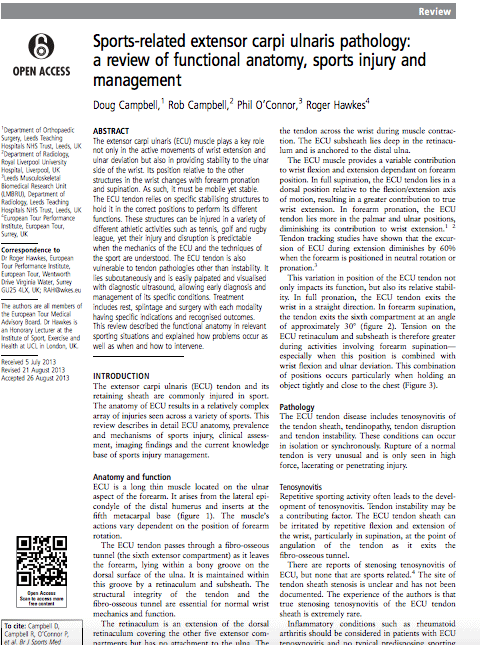What structures can we see at the wrist and hand?
The wrist and hand region has complex soft tissue and articular components, meaning you really must be have good anatomical knowledge to interrogate this area with ultrasound. Tendons, nerves and joint articulations are well visualised throughout as structures are all very superficial. The more superficial a structure is, the greater the frequency that can be used and consequently the better the resolution of the image. Some of the more common structures in this region are:
- The 6 dorsal extensor compartments
- The dorsal recess of the radiocarpal , ulnocarpal and distal radioulnar joints.
- The flexor compartment and flexor tendons.
- The carpal tunnel and its contents including the median nerve.
- The ulnar nerve and Guyon’s canal.
- The scapholunate articulation.
- Flexor and extensor tendons
- Hand joints for synovitis
Case Studies
We have put together a series of case studies which describe how ultrasound was utilised alongside a clinical examination. Discussing how its use did or did not change the patient journey, alongside some useful references.

Join The Ultrasound Site on MedShr to discover and discuss fascinating cases
Wrist ultrasound pathology videos
Hand ultrasound pathology videos
Register to receive our newsletter including case studies
Anatomy
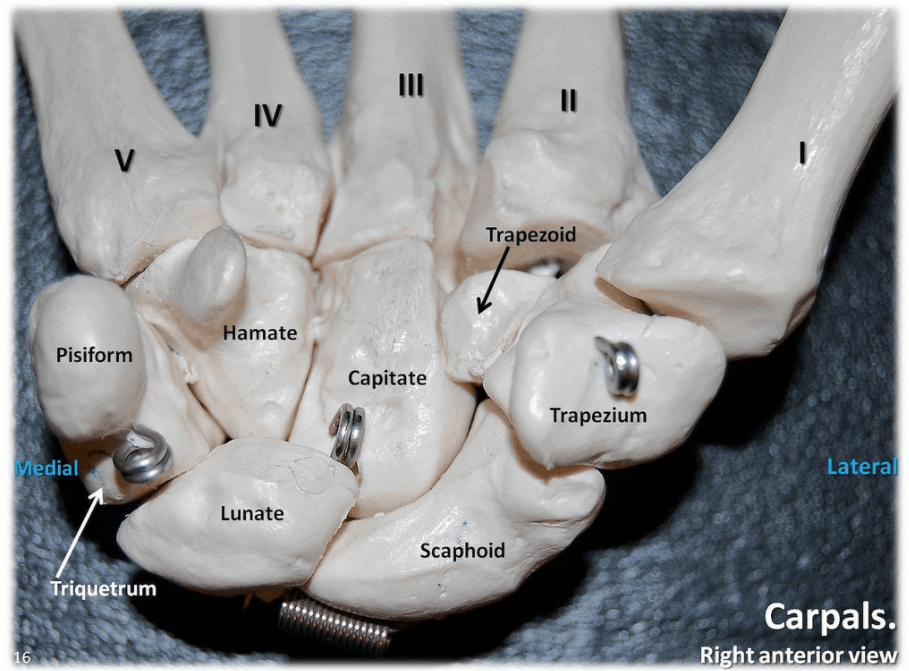
Wrist anatomy is very complex with an intricate system of osseous,articular and soft tissue anatomy. The wrist is composed of eight carpal bones arranged in two rows, proximal and distal. The most proximal joints are the the radiocarpal joint, distal radioulnar joint and the ulnocarpal joint. On the dorsal surface of the wrist you have the six extensor compartments, which are outlined in the ultrasound protocol above. On the volar surface of the wrist you have the flexor compartment with that flexor tendons and the majority of the neurovascular structures including the ulnar and radial artery, and the ulnar and median nerve.
Hand anatomy is complex with multiple joints, bones and tendons. The anatomy is intricate with flexor tendon pulleys and saggital bands stabilising the mechanisms that enable us to use our hands so freely. all are well visualised dynamically with high frequency ultrasound.

